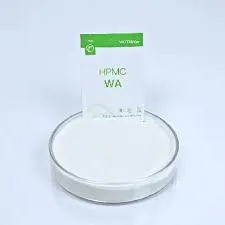
Dec . 06, 2024 17:08 Back to list
Applications and Benefits of Hydroxypropyl Methylcellulose in Various Industries
Hydroxypropyl Methylcellulose (HPMC) An Overview of Its Properties and Applications
Hydroxypropyl Methylcellulose (HPMC) is a semi-synthetic polymer derived from cellulose, a natural polymer found in the cell walls of plants. It has garnered widespread attention in various industries due to its unique properties, versatility, and safety profile. This article will explore the chemical characteristics, manufacturing process, applications, and benefits of HPMC in diverse fields such as pharmaceuticals, food, cosmetics, and construction.
Chemical Properties
HPMC is classified as a non-ionic, water-soluble cellulose ether. Its chemical structure consists of hydroxyl groups, which allow it to dissolve in water, creating a gel-like consistency. The varying degrees of hydroxypropyl and methyl substitution result in different grades of HPMC, each tailored for specific applications. The viscosity and solubility characteristics of HPMC can be adjusted by altering the ratio of hydroxypropyl to methyl groups, providing a wide range of options for formulators.
One of the most significant features of HPMC is its ability to form thin, transparent films. This property is advantageous in various industries, particularly in pharmaceuticals, where HPMC is used as a film-forming agent in tablet coatings and controlled-release drug delivery systems.
Manufacturing Process
The production of HPMC involves treating cellulose fibers with propylene oxide and methyl chloride. This reaction substitutes hydroxyl groups in the cellulose chain with hydroxypropyl and methoxy groups. The resulting product is then purified to remove any residual reagents and unreacted components. The purity and grade of HPMC can vary depending on the starting cellulose source and specific manufacturing conditions, ensuring that suppliers can customize the final product to meet market demands.
Applications of HPMC
1. Pharmaceuticals
hydroxypropyl methylcellulose hpmc

In the pharmaceutical industry, HPMC is widely used as a binder, thickening agent, and controlling agent in drug formulations. Its gelling properties enable the formulation of sustained-release medications, where the drug is gradually released over time, enhancing patient adherence and therapeutic effectiveness. HPMC is often utilized in the production of tablets, capsules, and topical formulations due to its compatibility with various active pharmaceutical ingredients (APIs).
2. Food Industry
HPMC has found a prominent place in the food industry as a food additive and thickening agent. It is commonly used in baked goods, sauces, dressings, and ice creams to improve texture and stability. As a vegetarian substitute for gelatin, HPMC is also used in products requiring vegan-friendly gelling agents. Its low calorie content further enhances its appeal to health-conscious consumers.
3. Cosmetics
In cosmetics and personal care products, HPMC serves as a thickener and emulsifier. It is often found in skincare formulations, shampoos, and conditioners, where it helps improve the viscosity and stability of the products. Furthermore, HPMC’s film-forming properties contribute to the effectiveness of products like lotions and gels, providing a smooth and protective barrier on the skin.
4. Construction
In the construction industry, HPMC is utilized as an additive in cement-based materials, such as tile adhesives and plaster. Its water-retaining properties enhance the workability and adhesion of these materials, improving their performance and longevity. HPMC enhances the application of construction materials while preventing premature drying, which can cause defects.
Conclusion
Hydroxypropyl Methylcellulose (HPMC) is a multifaceted polymer with significant roles across various industries. Its unique properties, including water solubility, film-forming ability, and versatility, make it a valuable ingredient in pharmaceutical formulations, food products, cosmetics, and construction materials. As industries continue to evolve, so too will the applications of HPMC, reinforcing its relevance and importance in delivering innovative solutions to meet consumer needs. Moreover, with growing awareness regarding health and sustainability, HPMC's natural origin and safety profile position it favorably in emerging markets focused on clean labels and environmentally friendly products. Overall, HPMC stands out as a crucial component in modern formulations, offering numerous benefits to manufacturers and consumers alike.
-
Versatile Hpmc Uses in Different Industries
NewsJun.19,2025
-
Redispersible Powder's Role in Enhancing Durability of Construction Products
NewsJun.19,2025
-
Hydroxyethyl Cellulose Applications Driving Green Industrial Processes
NewsJun.19,2025
-
Exploring Different Redispersible Polymer Powder
NewsJun.19,2025
-
Choosing the Right Mortar Bonding Agent
NewsJun.19,2025
-
Applications and Significance of China Hpmc in Modern Industries
NewsJun.19,2025







